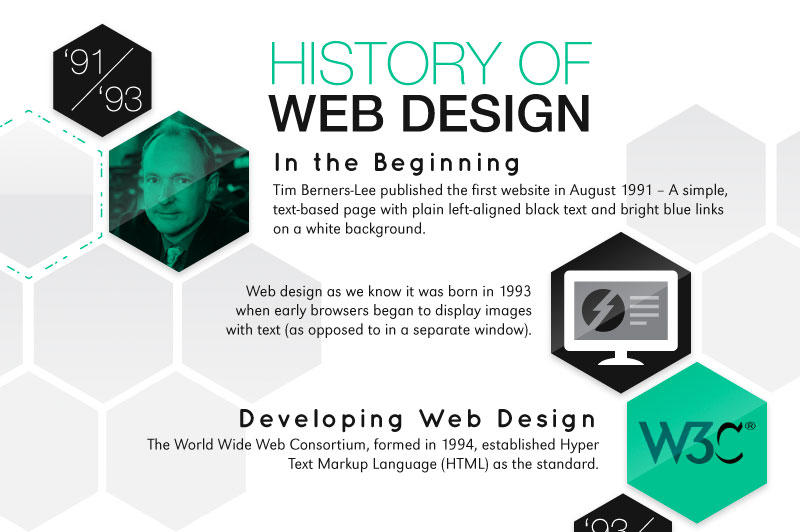The Growth Of Website Design: Then And Now
The Growth Of Website Design: Then And Now
Blog Article
Composed By-Rasmussen Lunde
In the past, web sites were simple and concentrated on details. Navigating was straight, and layout was for desktops. Currently, https://searchengineland.com/handle-unprofessional-treatment-seo-383650 is vital. Data guides styles for simple navigating. Receptive designs suit different devices. Today, dark setting decreases pressure, and minimalist food selections enhance navigation. Interactive functions involve users, and strong visuals attract attention. AI assimilation improves interaction. See how layout has progressed to boost your online journey.
Very Early Days of Web Design
In the early days of web design, simpleness preponderated. Internet sites were basic, with minimal shades, fonts, and designs. The emphasis was on offering information rather than flashy visuals. Customers accessed the web with slow-moving dial-up links, so rate and capability were key.
Navigating food selections were straightforward, commonly situated on top or side of the page. Sites were made for desktop, as mobile surfing wasn't yet prevalent. Related Site was king, and developers prioritized very easy readability over complicated style components.
HTML was the main coding language utilized, and designers had to work within its restrictions. Computer animations and interactive features were marginal contrasted to today's requirements. Sites were static, with little dynamic content or individualized individual experiences.
Surge of User-Focused Design
With the development of internet site layout, a shift in the direction of user-focused design concepts has actually ended up being increasingly famous. Today, developing web sites that prioritize user experience is crucial for engaging visitors and accomplishing company goals. User-focused layout involves understanding the demands, preferences, and habits of your target audience to tailor the site's design, web content, and includes appropriately.
Designers currently conduct complete study, such as individual studies and usability testing, to collect understandings and responses directly from customers. This data-driven method assists in creating intuitive navigation, clear calls-to-action, and aesthetically appealing user interfaces that resonate with visitors. By placing the customer at the facility of the layout process, internet sites can supply a more personalized and delightful experience.
Receptive style has likewise become a vital element of user-focused design, ensuring that sites are maximized for various devices and screen dimensions. This adaptability enhances availability and usability, accommodating the diverse ways customers engage with sites today. Essentially, the rise of user-focused style represents a shift in the direction of producing electronic experiences that prioritize the needs and expectations of completion user.
Modern Trends in Website Design
Discover the current fads forming web design today. One popular pattern is dark mode style, offering a smooth and contemporary look while minimizing eye stress in low-light environments. An additional key pattern is minimalist navigating, simplifying menus and boosting customer experience by focusing on essential elements. Incorporating micro-interactions, such as animated switches or scrolling results, can create a more engaging and interactive site. Responsive style stays critical, ensuring seamless customer experiences across various gadgets. Furthermore, utilizing strong typography and asymmetrical formats can add aesthetic passion and accentuate certain material.
Integrating AI modern technology, like chatbots for consumer assistance or tailored referrals, boosts user interaction and improves procedures. Accessibility has additionally become a considerable pattern, with designers focusing on comprehensive layout practices to satisfy diverse individual requirements. Welcoming sustainability by optimizing website performance for speed and efficiency is an additional arising trend in website design. Working together with user responses and information analytics to repeat and boost design continuously is crucial for remaining pertinent in the ever-evolving digital landscape. By accepting these modern-day fads, you can produce an aesthetically appealing, easy to use website that reverberates with your target market.
Final thought
As you reflect on the development of web site style from the early days to now, you can see just how user-focused style has actually become the driving pressure behind modern patterns.
Embrace the trip of adjustment and adjustment in website design, constantly keeping the user experience at the forefront.
Tippingpointdigital
Remain current with the most recent trends and innovations, and never ever quit progressing your approach to create visually sensational and straightforward web sites.
Evolve, adapt, and develop - the future of web design remains in your hands.
